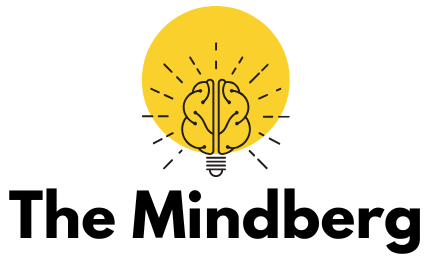Opioids are a class of drugs that include both prescription painkillers and illegal substances like heroin. While opioids are often prescribed to manage pain, their potential for misuse has made them a significant public health concern.
Harmful use of opioids refers to the consumption of these drugs in ways that lead to addiction, overdose, and other adverse physical and mental health effects. The misuse of opioids has become an epidemic in many parts of the world, particularly in North America, where opioid-related deaths have soared in recent years.
Understanding what constitutes harmful use is essential to addressing this crisis. For many, opioid misuse begins innocently with a prescription for pain management. However, over time, individuals may develop a tolerance to the drug, requiring higher doses to achieve the same effect, leading to physical dependence and addiction.
The resulting effects on the body and mind can be devastating, affecting not just the individual user but also their families and communities.
This blog will explore the harmful use of opioids, focusing on its impact on health, the reasons behind opioid misuse, and potential solutions. By delving into both the immediate and long-term effects, as well as discussing strategies for prevention and recovery, we aim to provide a comprehensive understanding of this complex issue.
Understanding Opioid Addiction and Dependence
Opioid addiction occurs when individuals develop a psychological and physical dependence on opioids. This dependence often stems from repeated use, which can alter brain chemistry and lead to compulsive drug-seeking behavior.
When opioids bind to receptors in the brain, they release chemicals like dopamine, which create pleasurable sensations. Over time, the brain becomes reliant on these drugs to produce feelings of well-being, which leads to a vicious cycle of misuse.
Physical dependence, characterized by withdrawal symptoms such as sweating, nausea, and anxiety, is another major concern. When individuals try to stop using opioids, their bodies struggle to function without the drug, making it difficult to quit. Addiction is not solely about the physical symptoms, however; the psychological grip opioids have on users can be just as powerful, reinforcing the harmful cycle.
Both addiction and dependence can begin with a legitimate prescription for pain management, especially when opioids are taken over an extended period. This is why it is critical to carefully monitor opioid prescriptions and consider alternative pain relief methods when possible.
Health Consequences of Opioid Misuse
The health effects of opioid misuse are wide-ranging and severe. Beyond the immediate risk of overdose, chronic opioid use can lead to long-term damage to organs and bodily systems. Opioids can depress the respiratory system, slowing down breathing to dangerously low levels. Overdose is often caused by this respiratory depression, which can result in death if not treated immediately.
In addition to the risk of overdose, prolonged opioid misuse can cause damage to the liver and kidneys, impair cognitive function, and compromise the immune system. The gastrointestinal system is also affected, as opioids slow down bowel movements, leading to constipation and other digestive issues. These health problems can exacerbate the physical toll opioid misuse takes on the body, leading to an overall decline in well-being.
Chronic opioid misuse can also affect mental health, contributing to the development of conditions such as depression, anxiety, and cognitive impairment. The brain’s reward system is rewired with regular opioid use, making it harder for individuals to experience pleasure from everyday activities. As a result, many opioid users struggle with anhedonia, a loss of interest or pleasure in normal activities, which further deepens their psychological distress.
The Role of Prescription Practices in Opioid Misuse
Prescription opioid misuse is a significant driver of the opioid crisis, as many individuals who develop opioid use disorders begin with a legitimate prescription. In many cases, prescriptions are written without full consideration of the risks involved, particularly when opioids are prescribed for chronic pain or conditions that might not require such potent medications.
Excessive or long-term prescribing of opioids increases the risk of misuse, especially when alternative pain management strategies are not explored. Doctors and healthcare providers play a critical role in preventing opioid misuse by thoroughly assessing the need for opioids, monitoring usage closely, and exploring alternative treatments such as physical therapy or non-addictive medications.
Better prescription practices, such as limiting the quantity of opioids prescribed and regularly reviewing the effectiveness of pain management plans, are essential steps in addressing the opioid epidemic. Education for both healthcare providers and patients about the risks of opioids can also help to reduce the misuse of these powerful medications.
Socioeconomic Factors and Opioid Misuse
Opioid misuse is often exacerbated by underlying socioeconomic factors, such as poverty, unemployment, and lack of access to healthcare. People who experience financial instability or have limited access to healthcare may turn to opioids as a means of coping with physical pain or emotional distress.
Additionally, opioid addiction can perpetuate cycles of poverty by limiting an individual’s ability to work, leading to a loss of income and further exacerbating financial difficulties.
Communities with higher rates of poverty are often more vulnerable to the opioid epidemic due to limited access to addiction treatment and mental health services. As opioid misuse becomes more widespread, it deepens the inequalities faced by these communities. The relationship between socioeconomic status and opioid misuse underscores the need for a holistic approach to tackling the opioid crisis, one that addresses the root causes of addiction and supports individuals at every level of society.
The Impact of Stigma on Treatment and Recovery
Stigma surrounding opioid misuse and addiction can prevent individuals from seeking the help they need. People who struggle with opioid use disorders often face discrimination and judgment, which may discourage them from accessing treatment. The fear of being labeled as an addict or a failure can prevent individuals from reaching out to healthcare providers or support networks.
Changing societal attitudes toward addiction is crucial for fostering an environment in which individuals feel comfortable seeking help. Education and awareness campaigns that emphasize addiction as a medical condition, rather than a moral failing, are essential for reducing stigma and promoting recovery. Support groups and counseling services can provide the understanding and encouragement needed to break the cycle of addiction and build a path toward healing.

